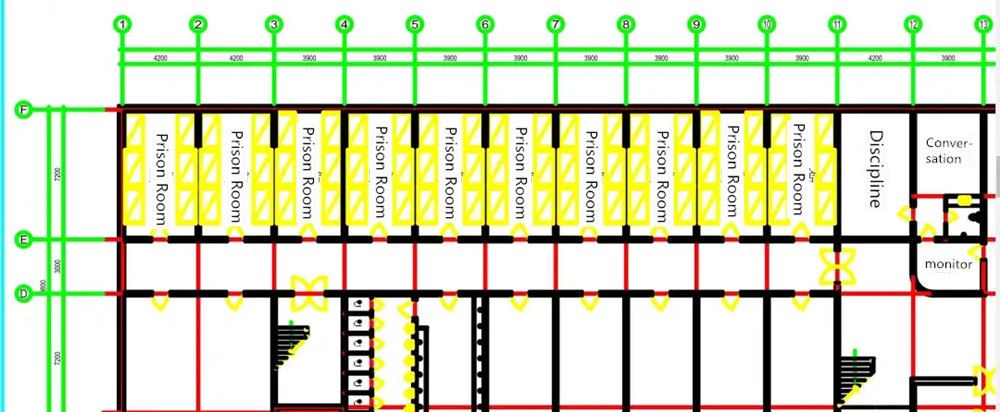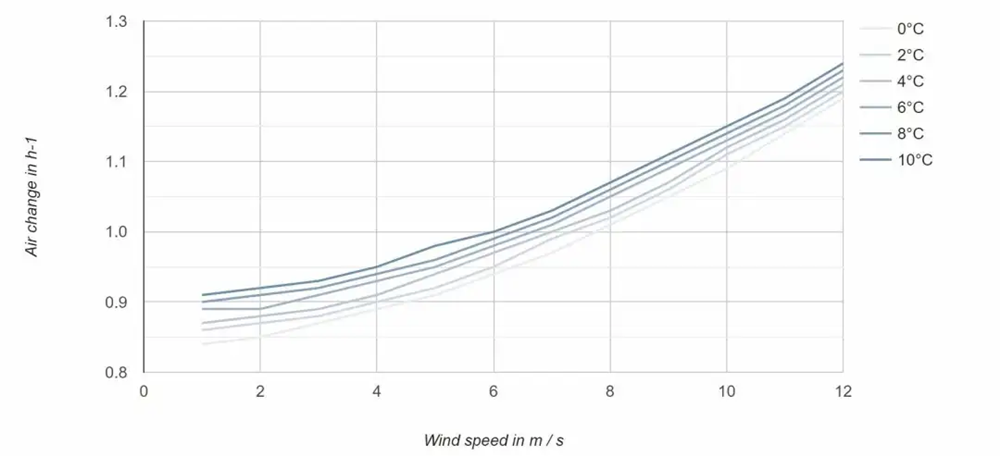Recently, another outbreak of coronavirus cross-infection was reported in a closed managed space. The large-scale resumption of companies/schools/supermarkets such public places across the country has given us some new insights into how the coronavirus can be prevented in densely populated areas of public buildings.
From the live cases of cross-infection, in a closed managed jail, there are 207 people be infected, and on the Diamond Princess cruise ship, more than 500 people get infected. Those examples proved to us that in crowded areas, especially the relatively closed space, whether it is the closed personnel management space with simple conditions or the luxurious cruise ship, it will lead to cross-infection due to poor ventilation or the operation problem of the air conditioning system.
Now let us take a relatively typical building as an example to analyze its ventilation system, and to see how effectively control cross-infection in densely populated areas.
Here is the layout of a typical prison. According to regulations on such buildings, that the number of people in a men’s or women’s room must not exceed 20.This is a medium density design with 12 bunk beds per room.

Fig 1: prison layout
In order to prevent prisoners from escaping, the outdoor ventilation area is normally designed to be very small. The specification strictly stipulates that the window is prohibited to exceed 25cm.Generally, the vent of each room is between 10~20cm.Because the room is designed with upper and lower bunks, the height is not less than 3.6m according to the prison construction standards. So the basic size of this jail is about 3.9m wide, 7.2m long, 3.6m high, and the total volume is 100m3.
There are two driving forces for natural ventilation, one is wind pressure and the other is hot pressure.By calculation, if such a jail has an external opening of 20cm by 20cm and is opened at an altitude of more than 3m, the overall ventilation rate of the room should be between 0.8 and 1h-1.That means the air in the room can be changed entirely almost every hour.

Figure 2 calculation of air change times
So how to judge the ventilation system is good or bad?
An important indicator is the volume fraction of carbon dioxide.More people, poor ventilation, indoor carbon dioxide volume fraction will rise, although carbon dioxide itself is odorless, but it is an indicator.
More than 100 years ago, Max Joseph Pettenkofer, a German who first introduced the concept of ventilation, came out with a standard formula for health: 1000×10-6.This index has been authoritative until now. If the indoor carbon dioxide volume fraction is controlled below 1000×10-6, a healthy air environment can be basically maintained, and people are less likely to transmit diseases to each other.

Max Joseph Pettenkofer
So what is the volume fraction of carbon dioxide in this room? We made a simulation calculation, if 12 people are considered to be in a lying state. For such room height, room size and ventilation volume, the stable volume fraction of carbon dioxide is 2032 × 10-6, which is nearly double the standard of 1000 × 10-6.
I have never been to a closed management space, but it seems that people often say that the air is dirty.
These two incidents, especially the recent incident of 207 infections, give us a great warning that resumption of work in personnel density areas requires special caution.
A crowded area that is very prone to produce similar effects is the classroom. A classroom often has about 50 students gathered together. And they often stay for 4 to 5 hours. In winter, people will not choose to open windows for ventilation, because it is cold. There is a risk of cross infection. If you measure the volume fraction of carbon dioxide in a classroom full of people in winter, many of them exceed 1000 × 10-6.
The most effective way to deal with the cross-infection of coronavirus, and almost the only one available way, is ventilation.
While the most effective way to detect ventilation is to measure carbon dioxide volume. We basically know that if the Co2 volume is less than 550×10-6, in which the environment is very safe, even if there are individual patients in the room.On the contrary, we can know , if the carbon dioxide volume is more than 1000×10-6, it is not safe.
Building managers should check the buildings air conditions every day. If you are worried, take an instrument with you. If not, use your nose.The person’s nose is the best and sensitive detector, If the condition of the air is unfavorable, run as fast as you can
Now the society is gradually returning to normal production and work, we should be as much careful as possible when we are in a relatively closed space, such as underground shopping malls, underground corridors, as well as classrooms, waiting rooms and other crowded space.
Author: Xu Peng
Post time: Apr-21-2020








